Turkey is one country that I can never visit too many times.
The epicentre, Istanbul, brims with delicious food, fascinating architecture, and massive markets. Venture deeper into Turkey and you can soar in a hot air balloon over the otherworldly landscapes of Cappadocia, discover the ruins of ancient Troy, or witness WWI battlefields at Gallipoli.
I recently had the opportunity to visit Troy and Gallipoli on a tour of Turkey’s Çanakkale province (pronounced “Chan-uh-ka-lay”). I knew there’d be a lot to learn from these famous sites, but I did not expect Çanakkale to be such a wonderful off-the-beaten-path vacation destination.
The province has much more to offer than its famous historical sites, as awe-worthy as they are. It’s also home to unique local seafood dishes, small batch wines, and relaxing beaches.
Çanakkale is a dream destination for anyone interested in history, but even if you’re not the world’s biggest history buff, you still can’t go wrong with a trip to Çanakkale.
Here’s 12 reasons why.
Know before you go: International tourism is still in its infancy in this region. They have a provincial website, but it’s not really that helpful for visitors. However, the majority of folks we came across on the trip spoke pretty good English.
1. Discover the Ancient City of Troy
Pretty much everyone knows the story of ancient Troy, if not from Homer’s classic poems Iliad and Odyssey, then from the 2004 movie starring Brad Pitt and Orlando Bloom. What you might not know is that Troy was a real city and is now a massive archaeological excavation site in Turkey’s Çanakkale province.
So, does that mean the famous story is true? Was there really a Helen and a Paris, a Trojan horse and Greek war? Was the magnificent city really destroyed over a beautiful woman?
The answer, like the excavation site, is complicated.


Archaeologists can prove that there was a city of Troy surrounded by massive walls, at least 12 meters high by 6 meters wide. They can prove there was a war, a very violent war, several actually. But they cannot prove what the war was about. It’s possible that it was over control of metal trade since Troy is strategically located at the western entrance to the Dardanelles.
Archaeologists have found not only 1 city of Troy but 9 cities stacked on top of each other, dating from 3,500 BC to 550 AD. It seems like every major civilisation had a try at building their own city at Troy, from Hittites, to Trojans, Greeks, and Romans. The Trojan city in the poems and movie was actually the 6th or 7th city of Troy from around 1,200 BC.
If you’re hoping to see giant ruins of the Trojan city, or maybe even the real Trojan horse, think again. Troy is an archaeological excavation site and many of the ruins are underground. Having said that, the site has been set up pretty well for tourists.
A wooden decked path directs visitors throughout the site to see ruins of ancient buildings and evidence of the Trojans innovations. We were told Troy had the first sewers, first canals, and first houses with doors and windows. Tour guides and audio tours are available at the site, and there are also signs explaining the historical finds along the way. A large section of the path has been made accessible to wheelchairs so everyone can experience the ancient history of Troy. Unlike most other ancient sites that are “reconstructed” from rubble, Troy is 95% in-situ – it looks just the same as when the archaeologists dug it up.

Troy was designated a UNESCO World Heritage Site in 1998. In celebration of the 20th anniversary of Troy’s addition to the UNESCO world heritage list, 2018 was declared the “Year of Troy”.
Book tickets to visit Troy as a day tour from Istanbul through Viator, or Troy and Gallipoli as a 2-day tour from Istanbul through Viator.
2. View Archaeological Discoveries at the Troy Museum
The story behind the real-life excavation of Troy is almost as juicy as its infamous romance and destruction. The tale recorded in Homer’s Iliad travelled far and many nations staked a claim on the ancient city’s fame and treasures.
Alexander the Great believed he was descendent of Achilles and visited Troy to sacrifice to the goddess Athena on his way to invade Asia.
Roman emperors Julius Caesar and Augustus believed themselves to be descendent from Aeneas, the rumoured sole survivor of the destruction of Troy.
King Louis the 1st of France believed himself to be descendent from the Trojan King Priam.
Legend has it that London, England was founded by a descendant of Troy.
And on it goes. Maybe there’s a little bit of Troy in all of us?
These famous figures from history seemed familiar with Troy’s story and location, but something changed around 500 AD. The site was struck by earthquakes, tsunamis, and floods and became buried and largely forgotten for the next 1,400 years.
But, like anything recorded in classic literature, Troy didn’t stay forgotten for long. History teachers wouldn’t allow it. Neither would German businessman, Heinrich Schliemann, who searched the site for treasure in the 1870s.
Schliemann found gold, jewels, and other artefacts believed to be from the Trojan civilisation. He traded some to the Ottoman Government for permission to continue excavating. The rest, he took back to Germany to be displayed in a Berlin museum until WWII when it was confiscated by Russia and displayed in a museum in Moscow.
It really does seem like everyone wants a piece of Troy.
Recent and future finds won’t be nearly as hard to keep track of now that a dedicated Troy Museum has been opened a few minutes’ drive from the Troy excavation site. The museum showcases items from all 9 cities of Troy such as inscriptions, sculptures, altars, weapons, pottery, coins, and jewellery.

The treasure returned to the Ottoman Government by Schliemann has now been moved to the Troy Museum from the Istanbul Archaeology Museum. I was told the Turkish Government is also trying to negotiate the return of the remaining Schliemann treasure from Russia to display in the Troy Museum.
Unfortunately, I visited Troy a few days before the opening of museum so only got a sneak peek at the goods inside. I’ll be going back for a proper visit in 2019.
Tip: Check out the museum’s rooftop terrace.
3. See the Trojan Horse from the 2004 Movie “Troy”
If you’re more of a movie buff than a history buff, head down to Çanakkale town to see the wooden Trojan horse from the 2004 movie “Troy”. The horse is one of the town’s main attractions, located on the popular waterfront plaza.
After seeing the famous horse, I enjoyed a peaceful stroll along the water and watched local fishermen bring in their catch. The waterfront plaza has a lively atmosphere with street performers, food stands, and dozens of restaurants and cafes.
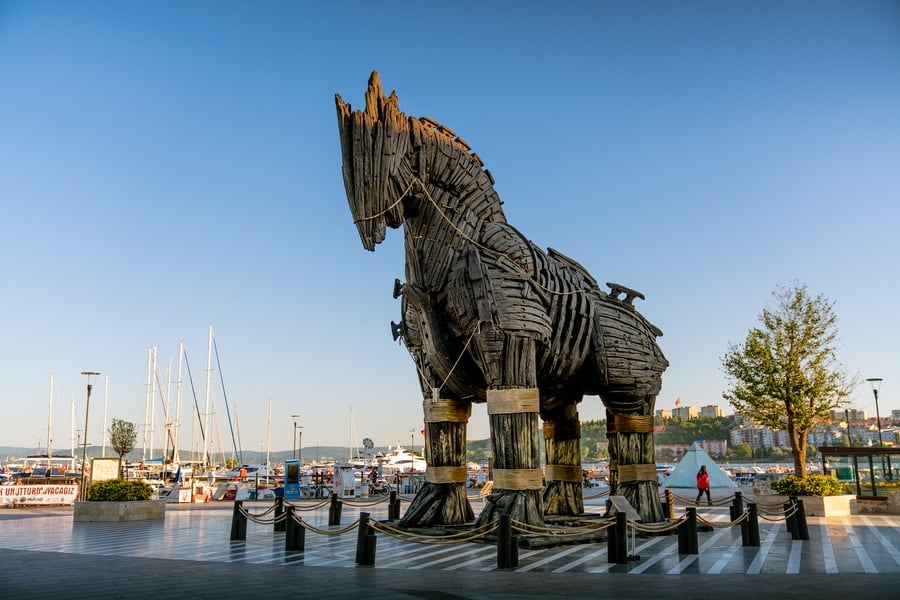
I found this Trojan horse in Çanakkale to be more realistic than the replica at the Troy site. That one has windows and steps for tourists, which would have made it pretty impossible for the Greek soldiers to hide inside!
4. Learn About Wold War 1 at Gallipoli
One of the major battles of the First World War was fought on the peninsula of Gallipoli in modern Turkey. As an Aussie, the battle of Gallipoli is a huge part of our national identity and I thought I knew the story pretty well.
Until I got there.
I saw the shores where Allied ships landed. I saw the hills where Ottoman soldiers planned their battle strategy. And I saw the plains where Allied and Ottoman soldiers met in a bloody battle and where 500,000 men lost their lives.
At the oddly-named war museum Epic Promotion Center (Çanakkale Destanı Tanıtım Merkezi), I saw uniforms that were actually worn during battle, real bullet casings and lifelike figurines.
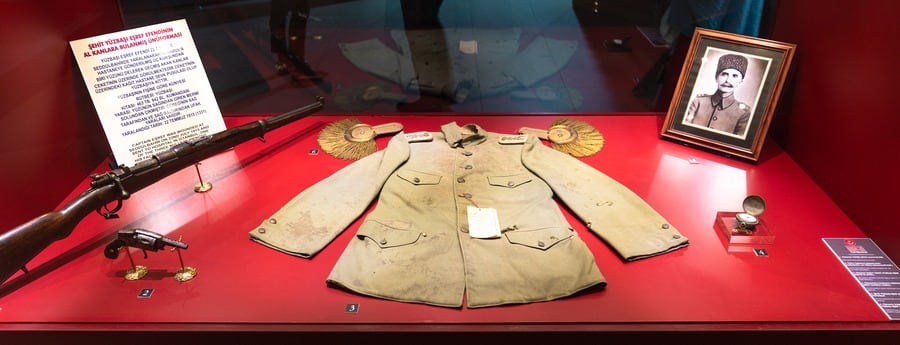
Back on the road, I saw photographs from 1915 of the exact location I was looking over. There was no doubt that WWI soldiers had stood in exactly the same spot where I stood.
If you think you tend to take our modern lifestyle and freedom for granted, go to Gallipoli. You’ll never have that problem again.
Book tickets to visit Gallipoli as a day tour from Istanbul through Viator.


I was shown around Gallipoli by tour guide, Hasan Günduğar. Hasan’s deep knowledge of WWI and Gallipoli is beyond impressive. He shared stories of Ottoman war heroes, and provided intricate details around well-known facts, like the dates and locations of the Allied ship landings.
Gallipoli was the only major Ottoman victory in WWI and was their last victory before the fall of the Ottoman Empire. There are two sides to every story and I’m grateful to have heard stories of bravery from both sides of the iconic battle of Gallipoli.
Hasan also runs a heart-warming project connecting Australians with lost loved ones who fell at Gallipoli, and are unable to travel to Turkey. If you have a lost family member (or friend) in Gallipoli then get in touch with Hasan. At no charge, he will track down their final resting place, lay flowers on their grave and send back photos to you. Such a wonderful guy.
5. Pay Your Respects To Fallen WW1 Soldiers At Gallipoli
A visit to Gallipoli is not complete without paying your respects to fallen soldiers at the Lone Pine Commonwealth War Graves Commission Cemetery, the Chunuk Bair Cemetery Hill, the Helles Memorial, ANZAC Cove and Çanakkale Martyrs Monument.
I won’t go into detail about the events that occurred at each site, but your tour guide will fill you in.
All I’ll say is…. bring a box of tissues.




6. Relax With The Greek Island Lifestyle In Bozcaada
Can’t decide between visiting Çanakkale and relaxing in the Greek Islands? Don’t worry… you can do both! Enter Bozcaada, one of two Turkish-owned islands in the Aegean Sea.
The island’s proximity to Troy earned it a mention in Homer’s Iliad, where it is known as Tenedos. The island’s Greek heritage is still very evident in its architecture and half-Greek-half-Turkish population.
Holidaying in Bozcaada feels very similar to holidaying in the more popular Greek islands. Every street you turn down is filled with brightly coloured buildings and doorways connected by canopies of grapevines. The island is famous for its seafood, wines, beaches and picturesque modern wind turbines.


Turks from Istanbul holiday in Bozcaada every summer when its beaches, cafes and wineries teem with tourists. Once summer is over, the island becomes semi-deserted as it hibernates over winter.
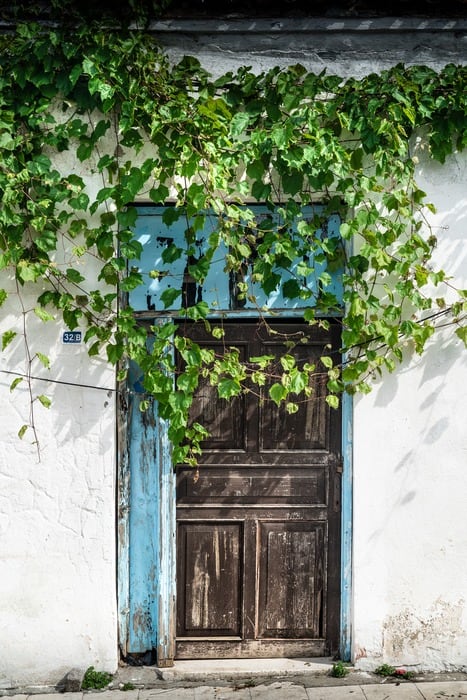
7. Gaze Over The Aegean Sea From The Alter Of Zeus
One of the best places to see the beauty of the Çanakkale province is from the top of the Alter of Zeus, near the small town of Bergama. According to Homer, this location is where the god Zeus watched the Trojan War.
At the time of its construction around 197-159 BC, the alter was a magnificent marble structure built to honour Zeus for the ancient city Perganon’s victory over Galatia. The alter was neglected and dismantled during the Byzantine period and all that’s left now is ruins.
Ruins with a spectacular view.
If you’re brave enough to climb up what’s left of the winding stone staircase, you’ll see amazing panoramic vistas of the surrounding cities and Aegean Sea.
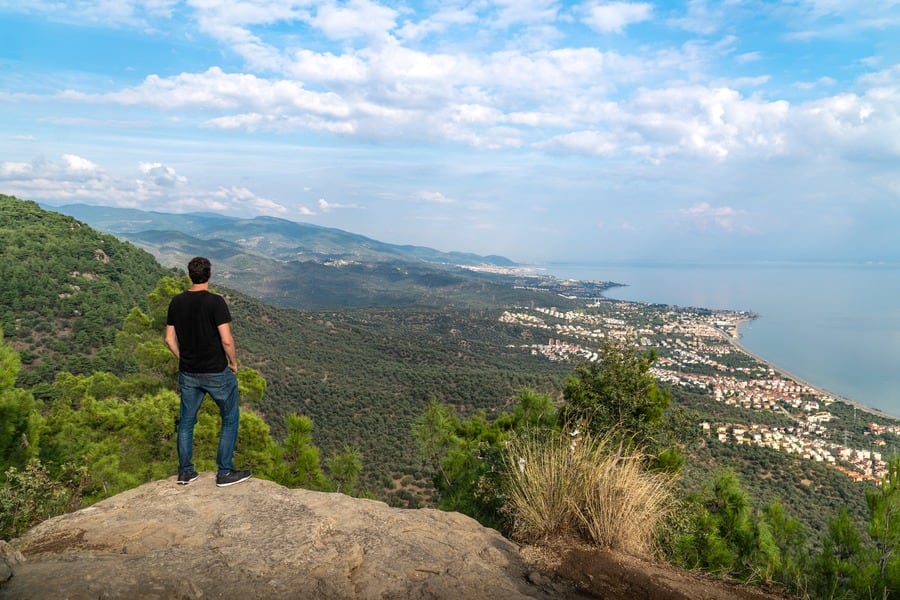
8. Wander Among Ancient Greek Ruins At Assos
Many civilisations have left their mark on the ancient city of Assos, from Greeks, Persians, and Romans, to Byzantines, Ottomans, and modern Turks. The city is most famous for being home to Aristotle’s School of Philosophy, when he lived there around 345 BC.
You can still see the rows of seats in the lecture hall. The top row is an amazing vantage point over the sea. Entry is free.
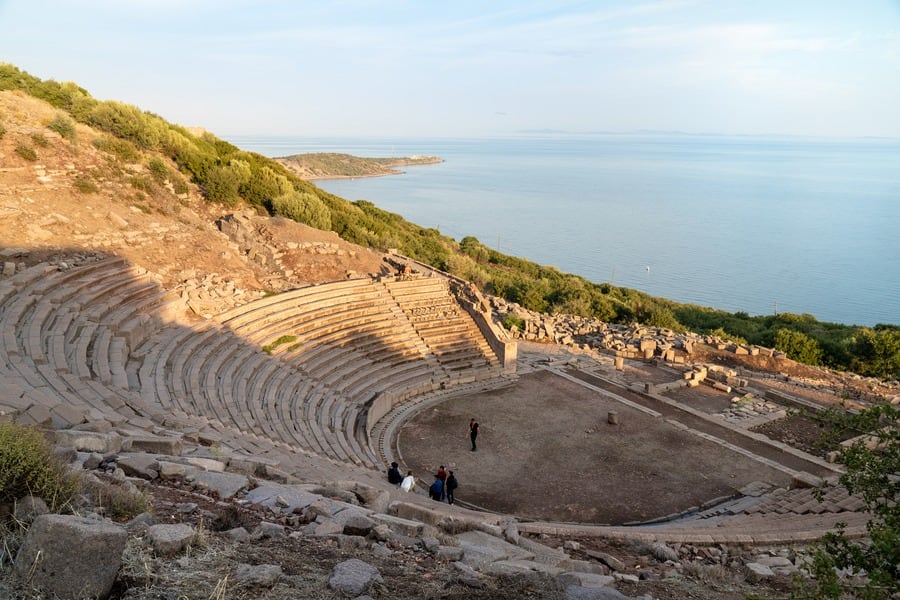
At the top of the Assos Acropolis are ruins of the Temple of Athena. Although constructed around 540 BC – 530 BC, there’s no mistaking the iconic Greek columns with eye-popping views from the top.
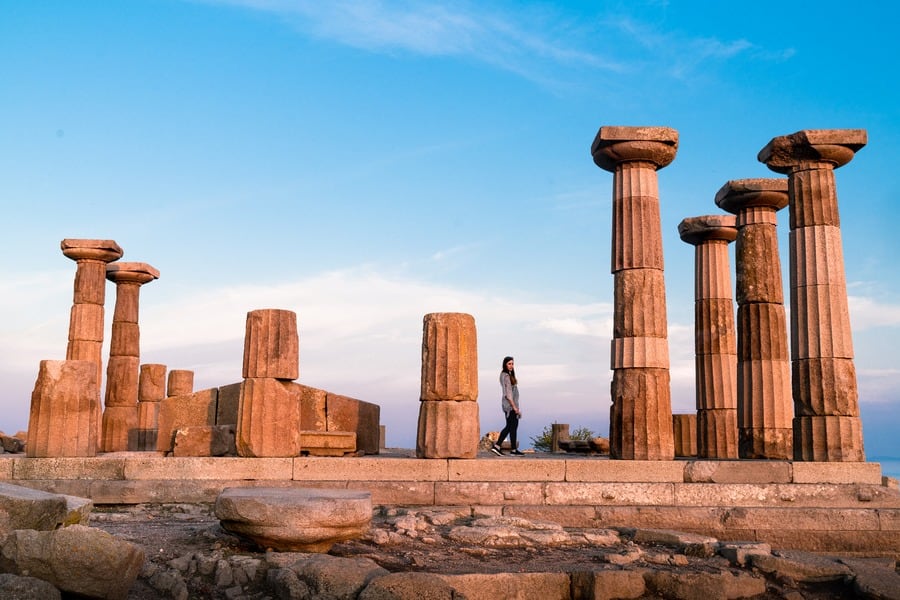
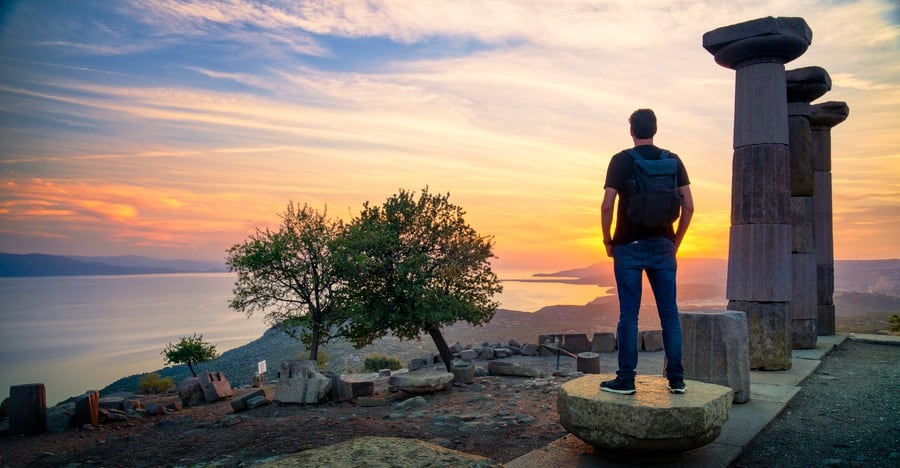
Visitors to Assos can enjoy peaceful walks along the beach and experience delicious fresh seafood in the nearby modern Turkish town of Behramkale.
9. Taste Delicious Local Food
Visitors to Çanakkale do not have to worry about going hungry. Turkey has a reputation for hospitality and welcoming guests with endless tea, coffee, and food. Add that to Çanakkale’s famous local olive oil, fresh home-made bread, delicious cheeses, Turkish pastries, and seafood and you have a recipe for a food coma.
Oh, and hands down, Turkey has the world’s best jam and relish.
Yum. Totally yum.


10. Discover The Ruins Of Alexandria Troas
It’s hard to believe that Alexandria Troas was once the most important port city in North-West Asia Minor and was almost named the capital of the Byzantine empire before Constantinople (now Istanbul) was selected. In contrast to the bustling city life in Istanbul, Alexandria Troas is an abandoned city of ruins.
At its prime, Alexandria Troas had a population of 100,000 people and was a popular trade port for ships on their way to Rome. All that’s left now is 400 hectares of ruins, most of which are underground. If you know what to look for, you can still make out the city’s theatre, necropolis, stadium, homes, and baths built over natural hot springs.

11. Try Delicious Turkish Wine
I was quite surprised that an island as small as Bozcaada has so many wineries. I suppose the grape vines growing in the middle of the cobblestone streets should have been a clue that the fruit grows well there.
I sampled local wines at Corvus Vineyards, which came highly recommend by friends from Istanbul. Our wine tasting at Corvus was so enjoyable I couldn’t help but leave with a couple extra bottles.
12. Befriend A Local Cat
If you haven’t seen the Instagram hashtag #catsofistanbul, you should look it up. Most of the city’s iconic landmarks seem to have one or more feline mascots lazing around or posing for selfies with tourists.
In Çanakkale, I found out that Turkey’s friendly felines aren’t unique to its largest city. Almost every business has a resident cat or two hanging around hoping to catch some scraps. In Çanakkale town, the local cats hang around the fishing harbour waiting for a share in the daily catch.


Unlike some cities around the world, the stray cats in Turkey are very friendly and love to be petted. If you’re wanting to pet these friendly felines, make sure you bring a bottle of hand sanitiser just to be safe.
The Bottom Line
The most famous parts of Turkey’s Çanakkale province are Troy, Gallipoli, and perhaps Assos. But don’t let that fool you into thinking a holiday to Çanakkale would restrict you to a historical tour.
Çanakkale has everything you could want in a Mediterranean getaway. It would be a mistake to miss the region’s iconic historical sites, but you can also relax on sunny beaches, swim in crystal clear seas, and indulge in world-class local food and wine.
Like ancient Troy, Çanakkale province is gradually being unearthed. Adventurous international travellers will be rewarded with authenticity and off-the-beaten-path charm. But it’s not going to remain undiscovered forever, so add this place to your travel plans this year.






















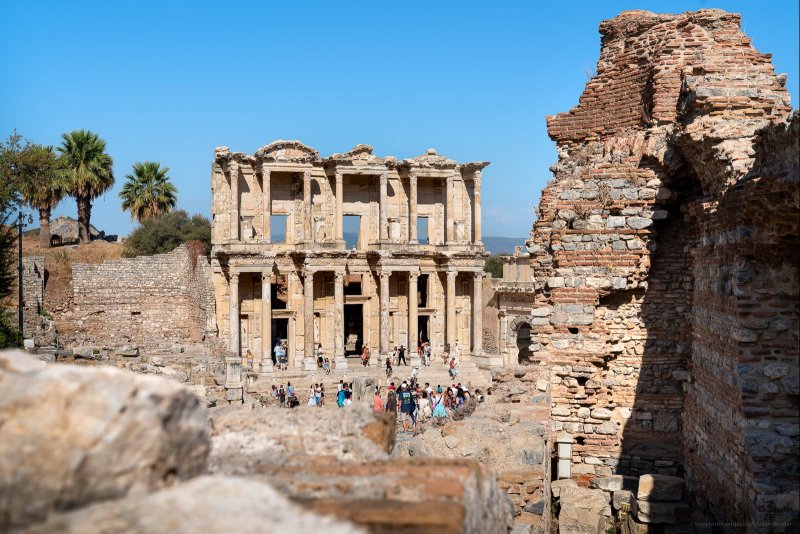

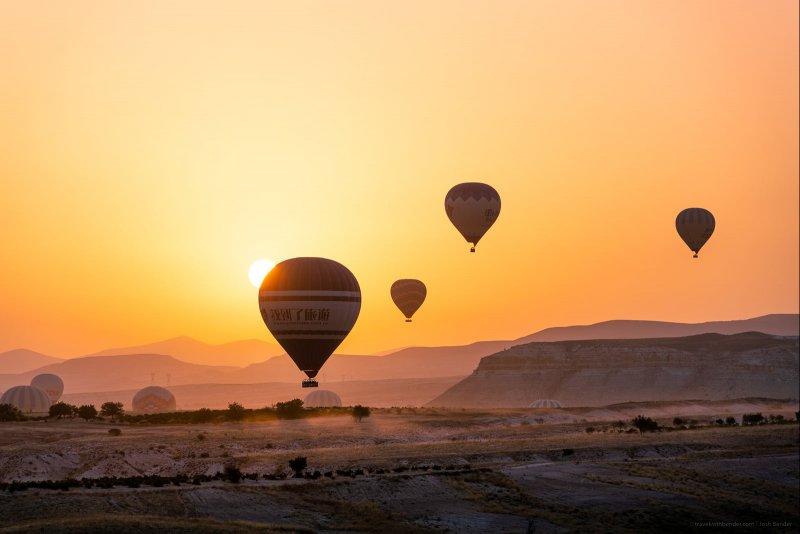




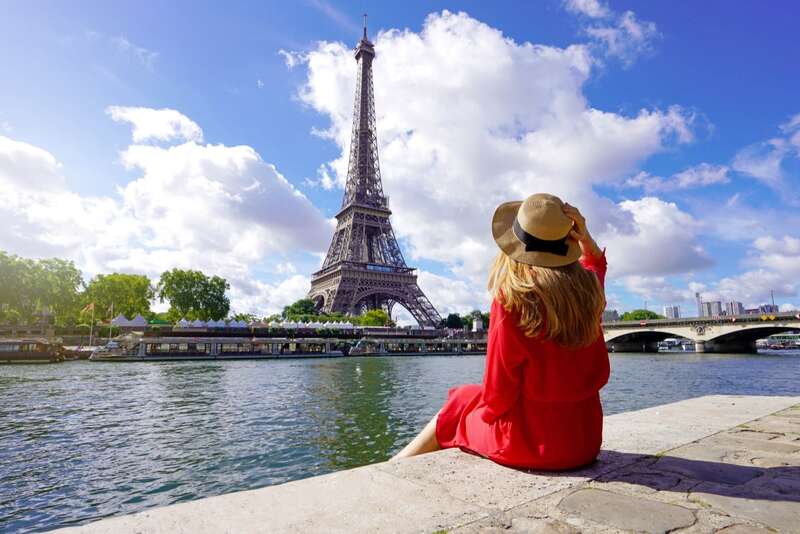

Reader Comments...
"I respond to every comment by direct private email. I look forward to your feedback" - Josh BenderI have not been to Turkey before, but I would like to visit one of these days. Maybe for my next trip? In any case, thank you for sharing. We really want to go there. I will not fail to put it on my list. See you soon from Mexico.
Wow sounds like an amazing trip - definitely somewhere I’ll have to visit!
I am just thinking to visit Turkey but this blog post encouraged me more to visit the place. I am really fond of a historical tour! So yeah, see you soon Turkey!
Nice Article! Turkey has large designation or places which attract tourist and plenty of thing to do, Thanks for sharing :)
Awesome blog! Thanks for sharing...
Interesting Blogs
Looks Amazing !!
It look wonderful place to visit there.
Loved your pictures.
Thanks a lot to share a nice post!
Interesting Blogs. Thanks
Very nice and informative. Thanks for sharing. Just one correction. İstanbul is not the capital of Turkey, although it is the largest and most famous city. Ankara is the capital.
Hello,
Lovely post. I have been to these places myself - so its all pretty familiar, except for one thing - your guide Hasan, who runs the project that connects Australians unable to travel to Gallipoli. I'd like to get in touch with him! Any idea how? Checked his FB page (linked through this blog post) - but if there is something more you know, I am very keen to know.
Happy travels and thank you for this lovely post!
Write Your Comment
Please DO NOT include links, URLs or HTML in your comments - they will be automated deleted and you will waste your time.